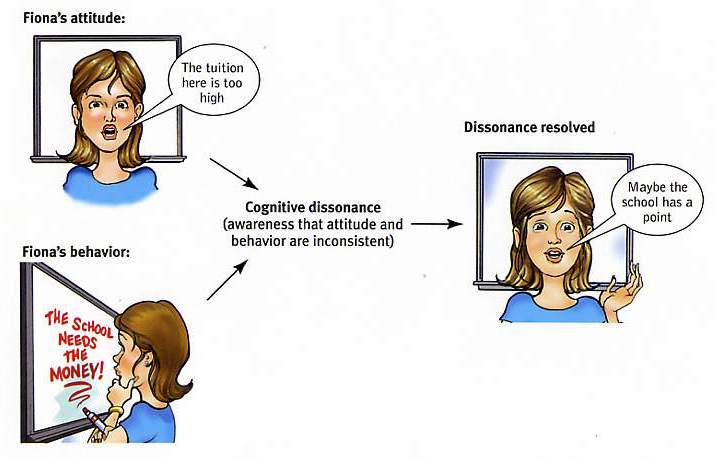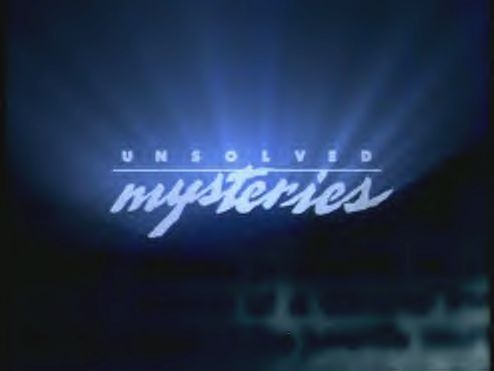- ‹ previous
- 19 of 14333
- next ›
Morse, LF: are Bat-First Cleanup Hitters "Average" Players?
.
Offense is not only additive but multiplicative, symbiotic in ways we haven't captured yet.
According to math, there is no clutch and Chone Figgins is worth 5 WAR. According to life, I'm not seeing that. Detroit put Miguel Cabrera at third base - that's how much they worried about defense vs. offense.
It's more important to get the offense functioning - or at least the majority of GMs act (and pay) like it is. If you're going to pay for defense, then that's what pitchers are for. Having my defensive guy standing on 2nd base all the time when the 3rd out is recorded doesn't help me win enough games. Occasionally-chained-together-singles is a poor substitute for a working offense. - Gordon Gross
........
Q. Baseball's GM's, universally, pay a lot of money for cleanup hitters who don't generate much WAR. Why is this?
A. This isn't an argument between Dr. D and other Seattle blogs. It is a systemic argument between major league GM's and the math majors who follow the game. In real life, GM's pay:
- $12-15 million for 2+ WAR the way that Paul Konerko and David Ortiz get them, and
- $4-5 million for 2+ WAR the way that Marco Scutaro and David DeJesus get them,
- Nothing for 2+ WAR the way that Endy Chavez gets them.
GM's don't argue with each other about this. It's not like Billy Beane would give you $15M for Marco Scutaro if he had it. It's not like there is a maverick GM out there, snapping up "jack-of-all-trades" 3-WAR players at $12M salaries. Every GM caps Marco Scutaro at $5M, and Every GM will pay you $12-15M for Paul Konerko and David Ortiz. If he has the money.
.
Q. Is this because GM's haven't studied the issue?
A. ...
There is no issue that GM's study more. Market inefficiency. The way to improve your team the most, for the least dollars. They bring their massive resources to bear on this question, and they continue the investigation on an ongoing basis.
No, my friend, GM's have studied the issue, and they have ALL concluded that "average-ish" 2-3 WAR cleanup hitters are worth a lot.
That doesn't prove anything, not beyond a shadow of a doubt, but if it doesn't give you pause for thought, that ALL organizations have reached this conclusion independently? Then you have insufficient respect for alternative points of view. We mean it in a good way.
.
Q. Was Jaso-for-Morse a trade of an average player for an average player?
A. Keep in mind that WAR dogmatists would say exactly the same thing with respect to trades like:
- David DeJesus for Paul Konerko,
- Ichiro Suzuki (at age 39) for Shin-Soo Choo,
- Cliff Pennington for Curtis Granderson,
- Brendan Ryan for David Ortiz, and
- John Jaso for Mike Morse.
We're not talking about Choo in his walk year. We're saying that if you had David DeJesus signed for four years at $6M per, or Shin-Soo Choo signed for four years at $6M per, the Fangraphs sabermetrician would call them a push. Something is horribly wrong here, either with GM's or with sabermigos.
On the left side of those bullets you have players making $3-6M per year, and on the right side you've got guys (assuming a free agent tour) who pull down $12M to $18M per year.
This is an example of cognitive dissonance: the feeling of discomfort when one has two firmly-held beliefs, which are completely contradictory.
.
Q. In the case of Jaso for Morse, a GM actually did swap them straight up.
A. There were complicating circumstances, such as Jaso being under club control. Jaso was NOT deemed equal to Mike Morse ceterus peribus, by anybody inside the game.
You're not actually going to see a David DeJesus traded for a Shin-Soo Choo where the contracts are equal. There is no GM interested in trading Choo's 2.5 WAR for DeJesus' 2.5 WAR (even assuming that is the org's WAR projection for both players).
A Fangraphs writer, if he were given a GM job, could in fact trade all of his 2.0 WAR Konerkos, for all the 2.7 WAR Cliff Penningtons he wanted, and could trade all of his 2.5 WAR Asdrubal Cabreras for all of the 3.0 WAR Marco Scutaros he wanted. Three years on, he might have an epiphany from the 100-loss bunker, but if so, he'd have a lot of fun getting there.
.
Q. What is the appropriate way to resolve cognitive dissonance?
A. One of the beliefs has to go.
Maybe both of them have to go. But for sure, one of the beliefs has to go. Because it is FALSE. A healthy human being does not wish to maintain beliefs that are lies.
It's possible that Theo Epstein and Pat Gillick and Jack Zduriencik are wrong, and the sabermigos right. This happens sometimes, and used to happen a fair amount of the time, back in the 1980's. I don't remember it occurring much lately, a systemic blunder on the part of baseball's player valuation, do you? GM's have sabermigos working for them now.
An intelligent neutral party certainly wouldn't assume that the ML think tanks, all 30 of which unanimously agree on this question, are wallowing in ignorance. The question is worthy of study.
.
Q. What is the accurate way to reconcile this particular cognitive dissonance?
A. To accept the LOGICAL FACT that either the Fangraphs school of thought, or the community of major league GM's, or both, are completely and irreparably WRONG.
GM's firmly insist that cleanup hitters with lead gloves, such as Choo, Holliday, Morse, Granderson, Butler, David Ortiz, Quentin, Jose Bautista, CarGo, Berkman, Granderson, etc., are worthy of $75M+ contracts. Fangraphs firmly insists that they aren't.
One of the two schools of thought has to go.
This isn't an argument about Mike Morse. It's an argument about cleanup hitters who can't run or field, and it's probably the most fundamental market-inefficiency argument of our time.
BABVA,
Dr D
Sandy Hook truthers amaze me
I’ve been seeing a lot of people posting these videos about how Sandy Hook was a conspiracy, and I’m feeling rather sick to my stomach about it. Not because I think they are true; after reading and watching two separate sources of information, I think it’s easy to dismiss most, if not all, of what they are claiming. I feel nauseated because this is what Americans do when they don’t get what they want. Opposed to gun control? Let’s claim the government killed 20 kids to make it happen—or, better yet, that it never even happened at all.
The thing is, every single person that I’ve seen who posted clips about how Sandy Hook is a conspiracy on Facebook is also a religious person. Organized religion, to me, is the greatest conspiracy of all. Mankind made religion up to explain things we didn’t understand. As anyone how they know Christianity true, and they say, “Because the Bible tells me so.” They trust a single, frequently-altered manmade book as their complete lifestyle guide, yet these same people demand a plethora of evidence before allowing parents to grieve over the losses of their children.
Is the irony really only apparent to me? It’s one thing if you question everything. I am a bit of a conspiracy theorist myself—I don’t think Dr. King’s death or JFK’s, for that matter, were accidental—and I believe in questioning everything. Everything. I’m teaching my daughter to ask questions about everything that she reads and to evaluate evidence herself , and I know that many of the supposed truths in our history books are common fallacies that we’ve simply accepted as fact over time. Print the legend and all of that, right?
But it seems to me that the Obama administration is surrounded by the largest amount of conspiracy theories of any president. It seems as if every time you turn around, if it’s not his birth certificate, it’s some other wild theory that President Obama is the anti-Christ, or the New World Order Hitler, or something or another. I think the rampant racism is to account for much of this, particularly when I see people spreading this information and their opinions of the president. I have a couple of highly racist acquaintances whom I know to assume things about anyone and everything—including me, over the years—who steadfastly believe anything bad they hear about their “n-word” president. These several white men, by the way, are all Christians.
By the way, I wonder how many of these “Sandy Hook truthers” know that the guy behind most of this conspiracy campaign and its videos considers himself the “new age Messiah” who follows an ancient Egyptian goddess? I doubt that fits in with your whole hellfire and damnation thing.
And while I’m not discounting that Obama can do wrong—all presidents do wrong at some point or another, and like I said, I believe there are conspiracies within any group in power at some point—but without any real credible evidence, this particular group of “truthers” is either denying that this mass shooting ever happened or that it happened differently, and they are causing so much pain and disgrace to these families. I’d also like to ask them about every other incident of mass shootings in our violent history—are they all conspiracies? How many do you want to justify not having freaking assault weapons available freely, without even a background check—and when you really expect peace to occur with so many weapons floating around?
Aren’t the meek, not the mighty, supposed to inherit the earth? I doubt the meek are supposed to tote around assault weapons.
Paris syndrome strikes Japanese tourists
Paris syndrome is one of several oddball psychiatric illnesses which strike specific travelers in specific places, like Jerusalem syndrome. In the case of Paris syndrome, the problem is almost completely specific to Japanese tourists visiting Paris for the first time.
TV of the 90s: Unsolved Mysteries
Although the ratings juggernaut Unsolved Mysteries technically debuted in 1987 and lasted until 2001, it was at its peak in the 90s. For the decade of the 90s, it seemed like at any given moment you could catch an Unsolved Mysteries rerun somewhere on cable television.
The mysterious and elusive "white cheetah"
In the summer of 2011, IO9 held a contest to "find a real cryptid." The prize: $2,000. After sifting through buckets of entries, the panel of judges (which included Lorne Coleman of Cryptomundo, a zoologist, and a Photoshop expert) awarded the prize to a wildlife photographer for his series of photos of the legendary "white cheetah."
Links for January 17, 2013
Photos and videos show contractors lied in decontamination reports about Fukushima cleanup. ajw.asahi.com
The radiation exposure monitoring program at Minamisoma Hospital has seen numbers of participants drop substantially. simplyinfo.org
The Cernavoda reactor in Romania was shut down again after failure of logic relay controls system. radiationnews.blogspot.com
Links for January 16, 2013
A symposium on the medical and ecological consequences of the Fukushima nuclear accident will be held on March 11-12, 2013 in New York City. nuclearfreeplanet.org
NHK announcer sues after being fired for evacuating Japan because of Fukushima disaster. enenews.com
IAEA shifts 47 Japanese reactors to ‘Long Term Shutdown’ leaving the number of reactors ‘in operation’ worldwide at lowest level since Chernobyl in 1986. worldnuclearreport.org
Fire broke out at South Texas project nuclear reactor site just before a re-licensing hearing. yournuclearnews.com
Ugh, I just can't shake that "Game Change" movie!
First of all, let me be clear that I do not care one shake of a lamb's tail about that HBO "Game Change" movie about a fictionalized woman who bears no resemblance to me. Why should I? I'm a mama grizzly. Do you think a grizzly bear cares about what HBO original movie is airing next? Or if it got awards? Grizzly bears do not care about the Golden Globes. They do not care about who wore what on the red carpet. Grizzly bears care about eating things and drinking water and doing all those healthy, true American things. Just like me.
A Broad Perspective On Nuclear Power Generation
I have been a fan of science and technology since I was a child. Many years ago I worked on projecting technological development and anticipated a lot of what has come to pass with computers and the Internet. I have always believed that science and technology could solve the problems confronting humanity if used with proper foresight and caution. Unfortunately, there are often unforeseen consequences following the adoption of a new technology. While this may be true of nuclear energy, sadly, many of the problems were clear from the beginning and were ignored.
I recently published a series of books on sociology that I have been editing for over ten years. They are available on Amazon under the name of Stuart C. Dodd. He was a professor of sociology at the University of Washington for many years. His pursuit of an understanding of human society took him far beyond the bounds of his discipline. He tried to develop a model of the universe that included all the physical and social sciences. When we first met, we discovered a mutual interest in understanding things from a global perspective. This is the perspective that I bring to nuclear energy.
Thinking about the human race and the use of various fuels down through history in a global perspective takes you beyond the usual concerns of what it costs to obtain, how you use it and what pollution/waste does it generate. There have been other periods of history in which the use of a particular fuel that allowed a particular society to flourish wound up destroying their environment to the point where the civilization collapsed. Most people would agree that the environment is important but don’t perhaps fully realize that nuclear accidents that release massive amounts of radiation could conceivably spell the end of our civilization.
There are interesting connections between the type of facility needed to utilize a form of energy and social factors such as politics. Some types of fuel, such as uranium, are expensive and scarce and require special massive equipment to generate power. This leads to centralization of power generation with attendant problems of distribution and disruption of huge populations if one plant fails. Massive investments are required for such energy sources which in turn depend on large pools of capital which restrict their use to certain types of economic and political systems. In contrast, other types of fuel and sources of energy are highly distributed and can be utilized at a local level without centralization of equipment, investment and control. These distributed systems might allow for a more decentralized type of economy and political system than we currently have in the U.S.
In situations where environmental degradation, waste disposal and centralization are ignored, massive power stations such as nuclear power generators provide seemingly cheap energy. The availability of large amounts of inexpensive electrical power encourages energy use and discourages conservation and efficiency. Centralized power use generates so much heat that huge columns of warm air rising above big cities alter weather patterns over large areas.
We will be exploring the direct problems of nuclear power generation such as cost, waste disposal, environmental degradation, impact of accidents, etc. in future posts, but we will also spend time addressing larger and more indirect issues raised by nuclear power.
Do you tailor your art to your audience?
Look, we all have the same image of the artist: driven to create by their internal demons, expressing their soul through their artwork, bringing the intensely personal to life. And I firmly believe that it's true that if you want to create art - not even "great art" but just "competent art" - then you have to establish a personal connection to what you're making. Otherwise it's more like "craft" than "art," if you follow me.








